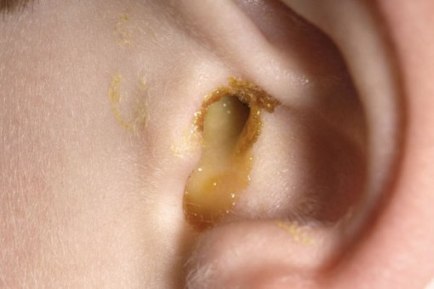What is swimmer’s ear, and how do you know if you have it?
Swimmer’s ear, or otitis externa if you’re a fan of Latin, isn’t necessarily contracted from swimming, but it is most commonly linked to water in the ear after a swimming session. The extra moisture makes a much friendlier environment for bacteria, which can quickly grow out of control. The result is an infection of the outer ear canal.
Other causes of outer ear canal infections include damage to the delicate skin inside the ear with fingernails, cotton buds, or other foreign objects. The damaged skin is invaded by ever-present bacteria, and the same type of infection results.
Is this different than chronic swimmer’s ear?
Yes. Most cases of swimmer’s ear clear up quickly with treatment. If the condition lasts for a month or more, or recurs four times in a single year, it can be considered “chronic”. Chronic otitis externa is often the result of infection by a fungus (in which case it might be called aspergillosis) or can be linked to a pre-existing skin condition like seborrhea or eczema. Persistent irritation of the ear canal by foreign objects (like hearing aids) can also be a culprit.
External otitis is most commonly treated with topical antibiotic ear drops. Left untreated, it can lead to serious infection or other complications so consult with your doctor if you suspect you have swimmer’s ear.
How can you tell if you have swimmer’s ear?
The early symptoms of swimmer’s ear include:
- A clear drainage that does not have a strong odor
- Mild but persistent itchiness inside your ear
- Red, irritated skin in the ear canal
- Pain, which worsens if you tug on your outer ear.
As the infection advances, you may notice:
- A feeling of pressure or fullness in the ear
- A partial loss of hearing due to swelling or fluid in the ear canal
- Spreading rash or redness of the ear canal
- More pain, and a more intense itching sensation
- More drainage, which may now have a bad smell and a yellowish color, and may include pus.
If the infection is allowed to become very advanced, you may experience:
- Fever
- Loss of hearing (due to the ear canal being swollen shut)
- Intense pain, which may appear to originate from anywhere from your neck to your entire head
- Distinct rash or redness spreading to your outer ear
- Swollen or painful lymph nodes.
As a rule, you should contact your doctor or another medical care professional if you think you might have swimmer’s ear, or if you have any of the following symptoms which may indicate a more serious problem:
- Discharge of fluid from the ear
- Sudden tinnitus (a ringing of the ear) accompanied by dizziness or loss of balance
- Any kind of severe ear pain
- An extensive rash on your ear or scalp, which may indicate seborrheic dermatitis.
Lastly, make sure to seek medical attention immediately if you experience fever when combined with any of these symptoms, as you may be experiencing a severe but treatable infection.
